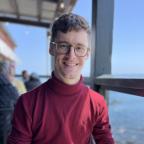2024 Nick Besley Award Webinar Now Available!
September 30th, 2024
Q-Chem is pleased to announce that the 2024 Besley Award Webinar, presented by award recipient Prof. Kevin Carter-Fenk on Wednesday, July 3, 2024, is now available for viewing. You can view the webinar recording here.

Advancements in synchrotron and tabletop light sources have made the study of core-level photochemistry in the x-ray regime more accessible, providing unprecedented insights into the interplay of electronic and nuclear structure. While experimental technology bounds ahead, common computational methods such as time-dependent density functional theory (TDDFT) face significant challenges, particularly with x-ray absorption spectra (XAS), where errors can exceed 10 eV. Such substantial errors hinder our ability to confidently offer theoretical insights into real-world phenomena.
In this webinar, we will explore the idea that the optimal orbitals for the ground state are not simultaneously optimal for core-excited states. We investigate the near-edge x-ray absorption fine structure (NEXAFS) spectroscopy of various aqueous solutions through the lens of EA-TDDFT, showing that while TDDFT requires a trade-off between accurate energies and intensities, EA-TDDFT gives excellent agreement with experimental data for both quantities. After establishing that EA-TDDFT provides accurate liquid-phase spectra, we extend its application to the NEXAFS of glycerol aerosols. Combining molecular dynamics simulations with EA-TDDFT, we reveal the significance of quantum nuclear effects in modeling the NEXAFS spectrum of glycerol at and below 300 K. Finally, we propose that glycerol aerosols spontaneously form glasses upon aerosolization, resulting in strong H-bond interactions that broaden the aerosol-phase NEXAFS features due to a phenomenon that we term as a “purple-shift”. Our results establish EA-TDDFT as a powerful and inexpensive tool in the quantum chemist’s toolkit for computing XAS in both gas and condensed-phase systems, opening the door to exciting new insights into the interplay nuclear and electronic structure.